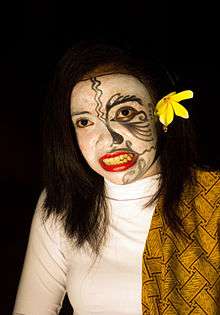Oral interpretation
Oral Interpretation is a dramatic art, also commonly called "interpretive reading" and "dramatic reading", though these terms are more conservative and restrictive. In certain applications, oral interpretation is also a theatre art – as in reader's theatre, in which a work of literature is performed with manuscripts in hand or, more traditionally, using stools and music stands; and especially chamber theatre, which dispenses with manuscripts and uses what may be described as essentialist costuming and stage lighting, and suggestive scenery.

The term is defined by Paul Campbell (The Speaking and Speakers of Literature; Dickinson, 1967) as the "oralization of literature", and by Charlotte Lee and Timothy Gura (Oral Interpretation; Houghton-Mifflin, 1997) as "the art of communicating to an audience a work of literary art in its intellectual, emotional, and aesthetic entirety". Historically essential to Charlotte Lee's definition of oral interpretation is the fact the performer is "reading from a manuscript". This perspective, once the majority view, has long since become the minority opinion.
Voice and movement technique is opsis ("spectacle") while oral interpretation is, conceptually, melopoiia ("music technique").
Because oral interpretation is an essential dramatic element in all performance art, all actors, singers, storytellers, etc., are interpreters – but not all interpreters are necessarily actors, or singers, or storytellers, and so on. When, for example, the writer David Sedaris reads one of his stories on stage, or when Leonard Cohen performs one of his lyric poems, they are both engaged in the art of oral interpretation.[1]
References
- "1992 Video: Leonard Cohen On His Atrocious Voice, Dylan, Ice-T, Songwriting, Love & Where's The Beef". cohencentric.com. 22 June 2015.